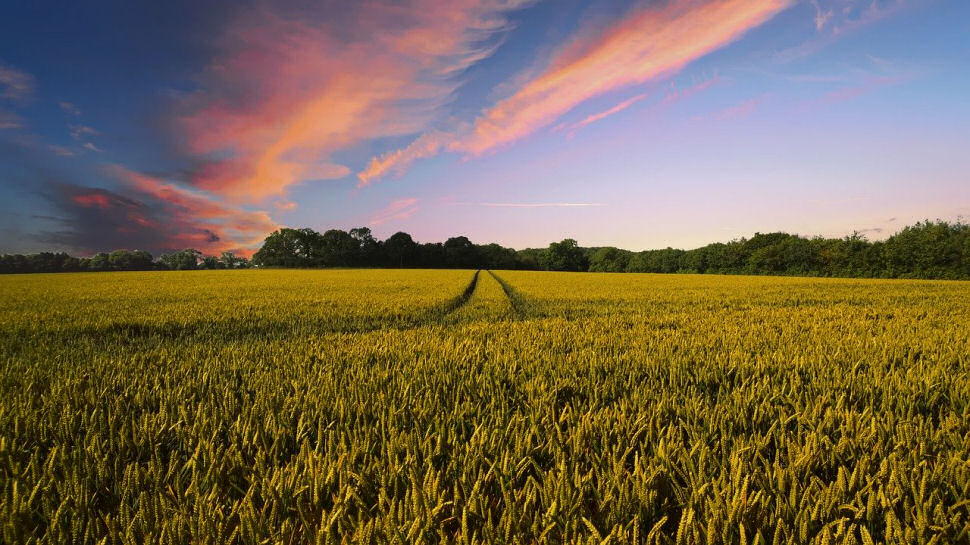Farmers rely on connectivity and data to support a growing population
Connectivity is necessary to feed our world

For most people, a dropped Wi-Fi connection can be frustrating, but it doesn’t typically equate to anything more than a minor inconvenience. For many farmers, who use mobile technology to monitor their work and plan their operations, a lack of connection can have a significant impact. It can affect an entire year’s work, the profitability of the operation, and how much food they produce for you and I. And while connectivity is so important, most of the farms producing food for our world are in rural areas, where connectivity is the most challenged.
Why is this so important? Consider this: One U.S. farm feeds about 166 people worldwide each year. With the global population expected to surge to nearly 10 billion by 2050, the weight on a farmer’s shoulder will only grow heavier. At the same time, they are working against numerous challenges like labor shortages, weather variability, and narrow time windows to get jobs done. Farmers need every advantage they can get, and leveraging technology enabled by connectivity is one of those advantages.
Chief technology officer at John Deere.
How data is used on the farm today
Data is used in two ways on the farm. The first way is to use the agronomic and operational data from one growing season to improve the outcomes in the next growing season. Think about this: the average farmer in the northern hemisphere plants and harvests a crop about 40 times in their career. So they have about 40 chances over their lifetime to identify ways to optimize their operations to improve their outcomes. Data is core to this as it allows farmers to monitor and analyze their results over time and use those insights to make more informed decisions.
Farmers have always leveraged data. But what once lived in a paper notebook now finds its home in digital databases, accessible by mobile applications. And with that transition, farmers are able to get more information from that data by overlapping jobs, years, and comparing results based on weather and inputs. Quite simply, digitization has allowed farmers to use the data they collect in a meaningful way that can impact their bottom line and make them more productive year-over-year.
For example, during harvest the yield (amount of grain produced) data provides insights into how the season went for farmers. They learn how much money their business will earn, and the results of their past decisions. Think of it like a report card. And now that farmers know the results of all their decisions, they can analyze how different combinations of fields, seeds, soils, and fertilizers performed. They’ll use all of this data over the next several months to help inform their plans for the next season.
A second way that data is used on the farm is in “real time”. Farms are complex operations with a lot of moving machines, trucks, and people, particularly during planting and harvest times. These operations are also spread out across broad areas of land with fields and farms sometimes 10, 20, or more miles apart. Managing the operations of the farm is made significantly more efficient when the farmer knows where every piece of equipment and all the farm labor is located and can communicate with both the machines and the people helping make the operation run. In an environment where connectivity isn’t available, the farmer is challenged to make this happen. Connectivity can mean the difference between spending 2 hours driving to a field to talk to an operator or spending 5 minutes to wirelessly send the operator and the machine working instructions. The impact of connectivity on a farm operation for real-time communication and operational decisions is immense.
For example, imagine being a farmer working in a rural field miles away from any technicians if something on their machine goes wrong. In agriculture, time is money and any minute of downtime can hurt a farmer’s bottom line. When connected, farmers can take advantage of remote diagnostic technology whereby the dealer can essentially screen share with the farmer and provide immediate assistance.
Are you a pro? Subscribe to our newsletter
Sign up to the TechRadar Pro newsletter to get all the top news, opinion, features and guidance your business needs to succeed!
At the same time, the farmer can connect to other machines in their fleet and make any adjustments needed – no matter where they are. But, it’s not just about farmers talking to their machines. It’s about each of their machines also talking to each other. For example, during spraying, it’s common to have multiple machines operating simultaneously within the same field. It’s challenging for a farmer to visibly distinguish which areas have already been sprayed, so the ability for those machines to know where the others have already been is critical so work isn’t duplicated, time isn’t wasted, and excess product – which cost money – isn’t sprayed. This coordination is facilitated by connectivity, enabling seamless communication between machines.
Real-time data collection helps farmers do more with less
Farmers need connectivity to reap the benefits of data and remote management. It’s crucial for their businesses. And it’s crucial for all of us, who rely on farmers to provide the food, fuel, and fiber for our growing global population. Let’s support farmers, and provide them with the technology – and connectivity – they need to provide for all of us.
We've featured the best rugged phone.
This article was produced as part of TechRadarPro's Expert Insights channel where we feature the best and brightest minds in the technology industry today. The views expressed here are those of the author and are not necessarily those of TechRadarPro or Future plc. If you are interested in contributing find out more here: https://www.techradar.com/news/submit-your-story-to-techradar-pro
Jahmy Hindman, Ph.D., is the chief technology officer at John Deere. He is responsible for building Deere’s tech stack and leading the company’s Intelligent Solutions Group.